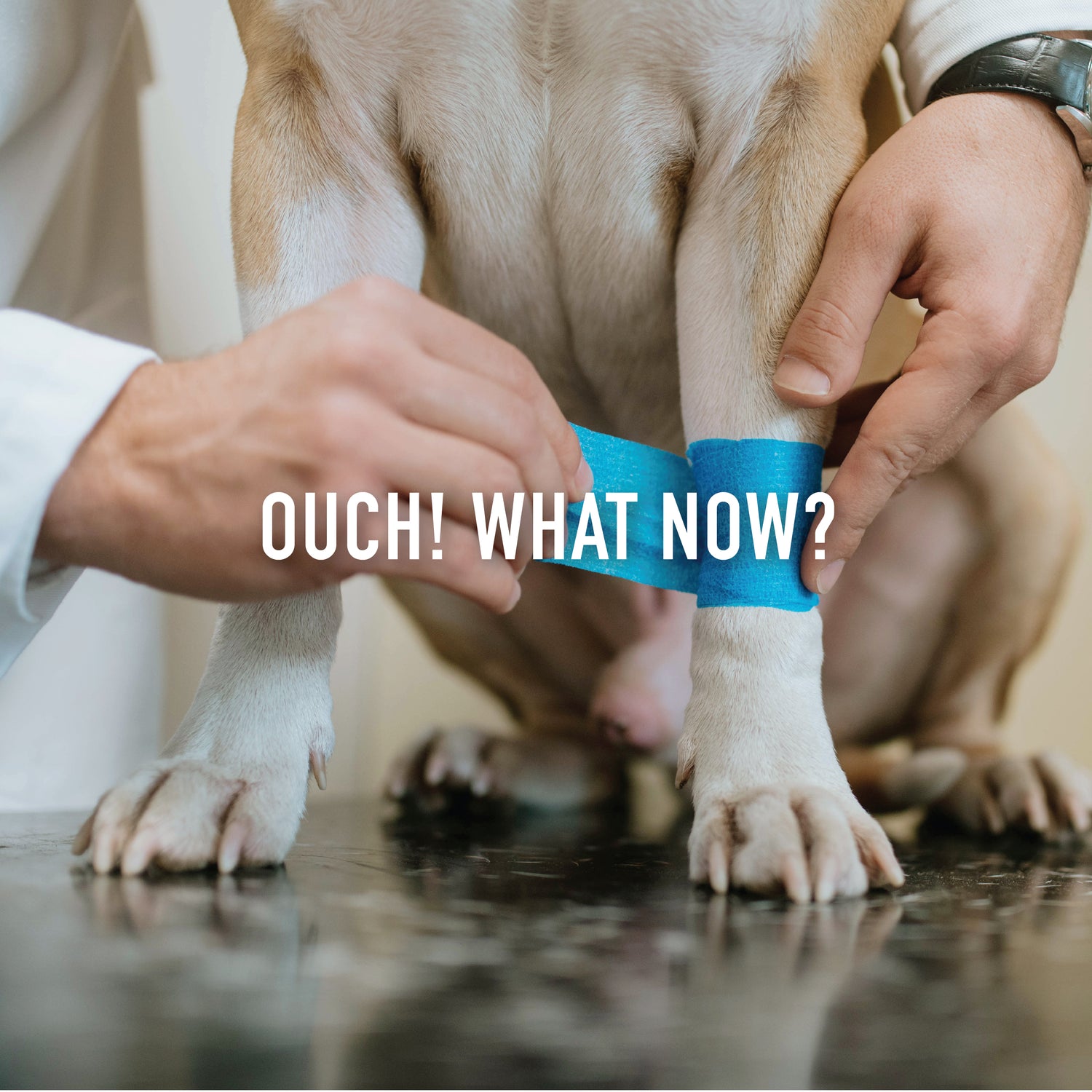
There is nothing worse than seeing your pet hurt. Seeing your furry friend with an injury like a cut, rash, and wound is hard to see and can be hard to treat.
We’ve rounded up all you need to know about how to treat your pet’s next injury, just in case the worst-case scenario happens.
When in Doubt, Go to the Vet
The first thing you need to keep in mind when assessing your pet’s wound, cut, or rash is what you can do to help.
If the injury worries you or you don’t think you have the skills to get it under control, you should always contact your vet for their advice or simply take your animal directly.
Remember - when in doubt, ask your vet.
How to Assess and Treat a Cut, Graze, or Wound
This simple guide will help you through the process of what you can do to help treat your pet’s cut, graze, or wound.
1. Assessment
Assess your pet. Do they seem like themselves? Can you find any other injuries on them that also need attention?
If you have concerns or believe the injury to be outside of your capabilities, contact your vet immediately for advice.
2. Check Their Injury
This step is another important step where you may find you have to call a vet, depending on the animal’s state.
Specific injuries to look out for:
- A foreign object wound - If your pet has an item like a piece of glass or metal lodged in their wound, then the best course of action is to do nothing to it and immediately call or take your pet to the vet. It’s best advised not to remove the object or place pressure on the object or wound.
- A heavily bleeding wound - If your pet’s wound/cut/graze is bleeding heavily, your best course of action is to apply pressure to the bleeding injury with a clean and dry dressing and contact your vet immediately for advice and to ask to see them.
- Open wound (i.e., missing skin) - If your pet has sustained an injury that has left them with an area of skin missing, you should try to cover the wound with a clean and dry dressing but no pressure. Again, if this is the case, you should then seek out your vet immediately.
3. Clean the injury
If your pet’s injury doesn’t meet the requirements to be taken directly to a vet and is just a small injury with minor bleeding, you may want to move on to cleaning the wound.
Provided there isn’t excessive bleeding, and your pet allows you to, you can try running water over the wound to remove any dirt, grit, microbes, or other foreign bodies.
Be sure to use clean and sanitary water for this process or, if you have access to it, saline.
Again, if you find that even after cleaning, the wound still contains small pieces of dirt or gravel, be sure to cover it and contact your vet immediately for assistance lightly.
4. Healing
Once you have cleaned your pet’s wound successfully, it’s time to start thinking about how this wound will heal.
If it is a large wound that may require stitches, starts to bleed again, or looks unhealthy, we suggest, too, that you contact your vet or local veterinary clinic as soon as you can.
If it is a small wound, then you may be able to care for it yourself, with some of these helpful hints below.
What to Keep in Mind When Caring for Your Pet’s Injury
There are three things you need to keep in mind when caring for an animal’s injury, and those are:
- Clean
- Protect
- Infect
Clean
Be sure to clean your animal’s would roughly two times a day and change their dressings if necessary.
Remember only to use clean, sanitized products on your pet, always wash your hands, and wear gloves during any procedure.
Protect
During the healing process, you have to make sure your pet’s wound is protected from further damage. Since we can’t speak to our animals to tell us not to touch their wounds, you must make it so your pet cannot touch and further damage their injury before it has a chance to heal properly.
With some creative solutions, you can make sure your pet stays away from their wound. We recommend trying a neck cone or clothing like a protective sock to keep them from unwanted scratches.
Infect
Just because a wound has been cleaned doesn’t mean it’s out of the woods. This final step is centered around looking for any signs of infection. If you see any infection symptoms, like inflammation, heat, discoloration, or discharge at or near the site of the injury, apply an anti-bacterial solution and contact your vet.
A serious infection may require antibiotics, so it’s vital to catch wound infection early.
Antiseptic for Animals: What to Use?
If you’re a pet owner, being prepared can make a big difference in the treatment your pet receives.
Keeping an animal-friendly antiseptic in your home means that you are ready to help clean a wound and kill any microbes that might hurt your pet through that wound.
For an all-purpose safe, and effective antiseptic, we recommend our TrioX® - Topical Antimicrobial Spray For Pets & Livestock.

This antiseptic is safe for use with various animalsand kills 99.99% of bacteria, viruses, and fungi (including ringworm). You can use TrioX on injuries, including burns, ulcers, cuts, and inflammation.
The Bottom Line
If your pet gets a cut, rash, or wound, there are many things you can do to improve healing, reduce pain, and keep out infection.
Be sure to consult your vet about your pet’s injuries if you have any questions or concerns about how it looks.



